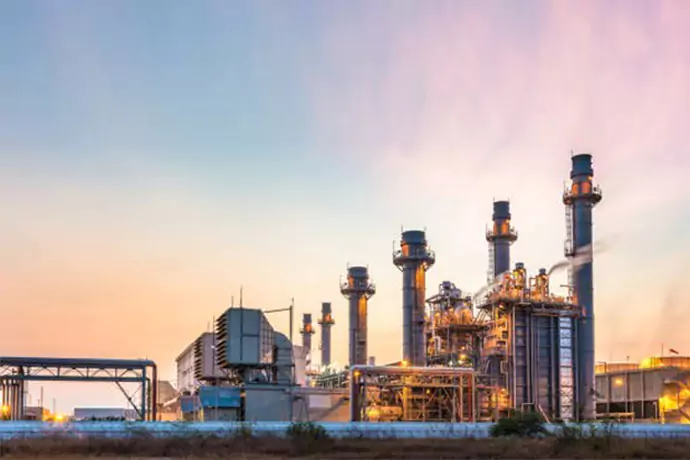-
Blogs
-
Home > Blogs > Global Chemical Manufacturing Outlook: Part-1
"GLOBAL CHEMICAL MANUFACTURING OUTLOOK: PART-1 AN OVERVIEW"

Chemical production is a vital component driving economic growth on a large scale, and it is the foundation of many businesses around the world. However, analysis of the current global market shows that technological advancements are having a significant impact on sustainability programs and that Government policies are having to change to keep up with changing consumer expectations. We are concentrating on investigating new opportunities brought by such rising global trends in chemical manufacturing while keeping such advancements in mind.
The global chemical manufacturing industry has been steadily growing, owing to increased demand for chemicals in numerous sectors, technological improvements, and an expanding global population. According to the most recent industry statistics, the chemical manufacturing market was valued at more than $4 trillion in 2021 and is predicted to reach $5.5 trillion by 2026.
Aastrid Life Sciences, a prominent player in the chemical production business, is well-positioned to manage the changing global terrain. We are a well-known chemical manufacturing company with a diversified array of products catering to numerous industries. The company works globally and has a strong position in both domestic and international markets for pharmaceutical intermediates, speciality chemicals, and active pharmaceutical ingredients (APIs). Innovation, strategic alliances, and geographical development are fundamental to the company's growth strategy. At Aastrid Life Sciences, we constantly introduce new products and improve existing services to meet changing client needs by maximizing our research and development skills.
This blog post sheds light on the opportunities and challenges that lie ahead in this dynamic world of chemical manufacturing.
Global Chemical Manufacturing
Due to the global economic boom and rising demand for commodities, the world's
chemical output increased by 5.2% in 2021. Global industrial output increased in
2021 as a result of a shift in consumer spending toward products and a sizeable
fiscal stimulus but then accelerated in 2021 before slowing in 2022. Chinese
supply-chain bottlenecks, ongoing lockdowns, and disruptions brought on directly or
indirectly by Russia's invasion of Ukraine have all hampered manufacturing output
this year. The expansion of the world's chemical output has also been slower as a
result. Overall, it was anticipated that in 2022, the world's chemical output would
increase by 2.0%.
Looking ahead, the global chemical output is expected to increase at a 2.9% rate in 2023 as production in Western Europe gradually picks up steam from its low points and production in the Asia-Pacific region recovers. The global economy will continue to recover after the slump in 2023, and demand for chemical goods will continue to rise. The greatest threat to the prognosis is ongoing inflation and interest rate hikes, prolonging and amplifying the forthcoming recession. Additional dangers include the possibility of war breaking out elsewhere in the world, an intensification of the crisis in Ukraine, financial instability, and a resurgence of supply-chain disruptions.
Global Consumption of Speciality Chemicals
The speciality chemical market is a vibrant and varied industry that includes a wide
range of chemical compounds designed for particular uses and sectors. Performance
chemicals, usually referred to as speciality chemicals, are highly valuable
substances with distinctive qualities and functions that improve process
performance, durability, and efficiency. Industries like automotive, construction,
electronics, healthcare, and personal care use these compounds extensively.
Increased industrialization, technical breakthroughs, rising consumer knowledge of
the advantages of speciality chemicals, and strict laws that place a strong emphasis
on sustainability and environmental considerations are all factors that are driving
the speciality chemical industry. The speciality chemical market continues to
flourish with a focus on innovation and customization, providing specialized
solutions that answer particular industrial needs and support overall economic
growth.
With the greatest revenue share of 48.5% in 2022, the Asia Pacific region dominated the market. The two biggest nations boosting the Asia-Pacific market for speciality chemicals are China and India. The area's demand for additives is influenced by the manufacture of food, beverages, personal care, cosmetics items, and medicines. China, India, and Japan are the primary producers in the area. China is the top manufacturer in the globe, which encourages the growth of the goods market. The Middle East and Africa market is projected to expand at a CAGR of 3.6% by 2030. The market for cosmetics is growing, and nations like Saudi Arabia, Kuwait, and the United Arab Emirates are supporting this growth. Additionally, there are several opportunities for foreign investors to succeed in the Middle Eastern food and beverage sector. Reliance on food trade, global tastes, changing consumer choices and lifestyles, strategic geographic location, and Gulf food initiatives have all had a big impact on the region's food and beverage industry's expansion. Over the future years, it is anticipated that these factors will also raise the demand for speciality chemicals.
Global Consumption of Fine Chemicals
The market for fine chemicals is a rapidly expanding industry that is essential to
many different sectors. Fine chemicals, commonly referred to as speciality
chemicals, are highly valuable compounds produced in tiny amounts with an emphasis
on performance and purity. Pharmaceuticals, agrochemicals, cosmetics, and other
speciality items are frequently made using these substances as essential components.
The fine chemical industry is constantly growing, with a focus on R&D and an
extensive range of specialized products to fulfil the particular requirements of
various industries.
The biggest contribution, at 1.36%, comes from BASF. North America and Europe are the top two geographical areas in the industry. Europe contributes about 30.71% of the total global revenue in terms of revenue, while North America comes in second with 23.47%. The size of the global market for fine chemicals is expected to grow from USD 172,510 million in 2020 to USD 278,510 million by 2027, at a CAGR of 7.1%.
As we delve further into the current outlook for global chemical manufacturing, let’s take a walk through how various nations are well-positioned to embrace emerging trends, leverage technological advancements, and contribute to sustainable practices.
Impact of COVID-19 on the Global Chemical Manufacturing Industry
In response to the COVID-19 crisis, top chemical producers are lowering capital and
operating expenses. Due to labour shortages and disruptions in the raw material
supply, many enterprises' manufacturing activities have been scaled back to 40%–60%
of their original capacity. In February 2020, chemical production fell 2.4%
globally, while 3.9% less chemical production was produced in the Asia-Pacific
region during that same month. The National Bureau of Statistics of China reports
that while revenues fell by 66%, China's chemical manufacturing industry had a 20%
fall from the previous year.
The chemical industry is required to respond positively and keep operations running while also maintaining worker safety, despite the reduction in demand and the sharp decline in pricing. While the demand for goods from large industries has slowed, businesses can benefit from the rising need for personal protective equipment, antiseptics, and disinfectants. Due to the increased requirement to avoid food, personal care, and medical product contamination, protective packaging demand is also rising.
Manufacturing facilities are heavily staffed due to the nature of the chemical business, as the majority of tasks cannot be completed remotely. Companies are creating staggered shifts and providing a safe space between employees to solve social distancing concerns. Chemical businesses are using technology more frequently in production areas where human participation is not necessary. Reduced worker density is achieved by the use of automated, data-science-enhanced, and remote-controlled manufacturing, which also ensures a more productive operation with less work. In order to guarantee the timely delivery of their goods, businesses are also aggressively embracing advanced digital capabilities that combine their production operations with supply chain and logistics equivalents.
In conclusion, the global chemical manufacturing sector is expected to experience rapid expansion and change in the years to come. In spite of obstacles including shifting laws, geopolitical unrest, and environmental worries, the sector is adjusting and developing to satisfy shifting demands. Chemical manufacturers are concentrating on sustainability, digitization, and research and development to increase competitiveness and achieve long-term success in the face of rising demand from industries including healthcare, electronics, and renewable energy. In order to take advantage of possibilities and navigate the changing business environment, organizations must collaborate across the value chain and engage in new markets. The worldwide chemical manufacturing industry is well-positioned to open up new development opportunities, address societal concerns, and contribute to a sustainable and prosperous future by embracing these trends and taking advantage of technological advancements.

